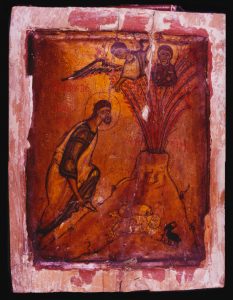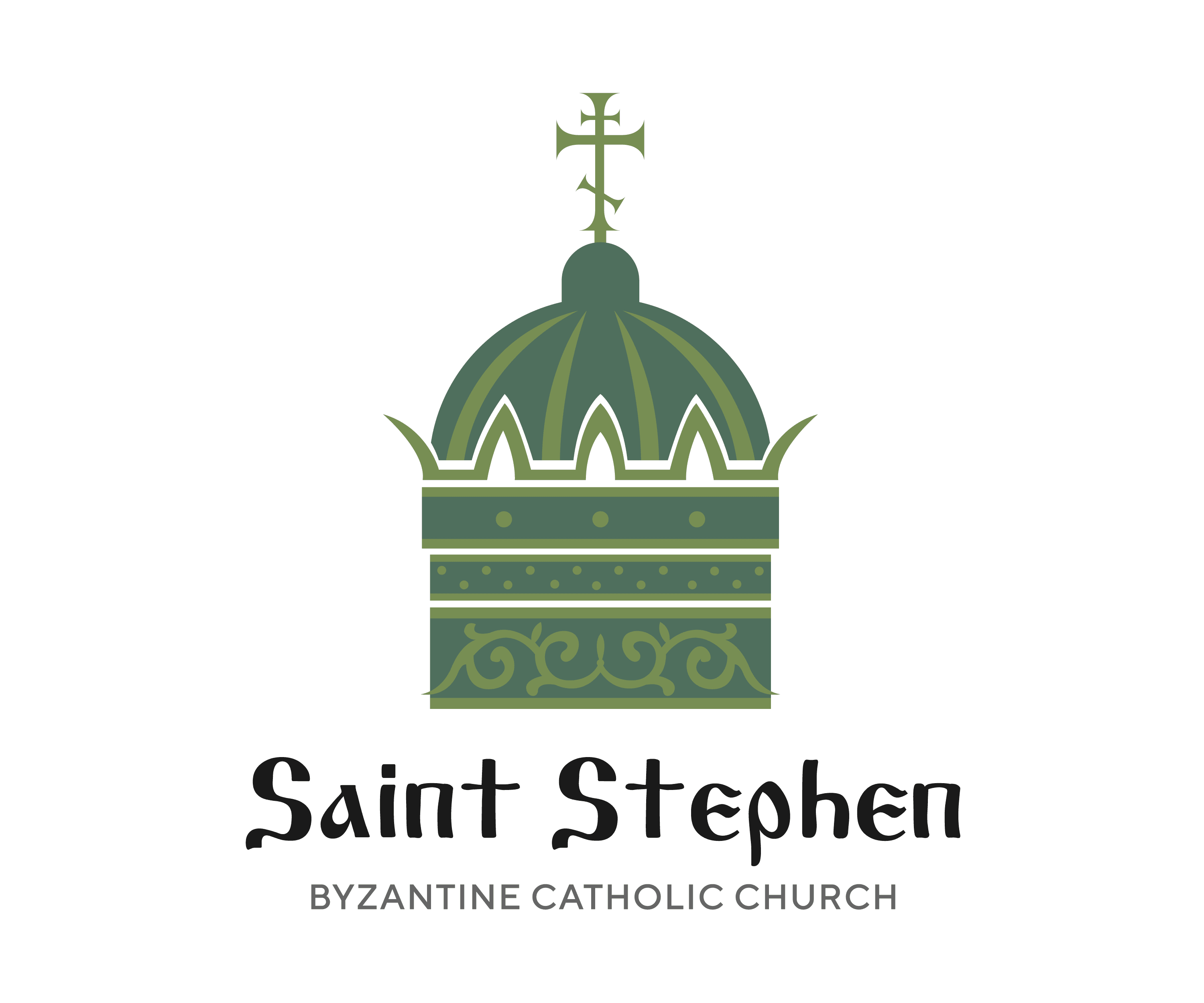“Some people reprove us for honoring images of the Savior, of the Mother of God and other holy servants of Christ.”
These are the words of St. John of Damascus[i] writing in the 8th century, but he might as well have written them today. I don’t know about you, but my whole life I have encountered rebukes from others against our veneration of holy images in the Catholic Church. The struggle against iconoclasm continues.
Today in the United States, we may hear these criticisms most often from some of our Protestant brothers and sisters, who accuse us of idolatry when they see us bowing down before the holy images. And criticism continues to come also from our Muslim brothers and sisters just as it has for around fourteen hundred years.
In fact, iconoclasm among Christians may well have initially grown as a movement at least partly in response to the influence of Islam. The truth is, iconography has had a place in Christian worship from as soon as it became feasible for us to make them. We have surviving examples of Christian imagery from as early as the 2nd century. If we go to the catacombs where the early Christians worshipped, there on the walls we find iconography. The use of iconography among Christians was only criticized and threatened after the rise of Islam.
St. John of Damascus lived and worked among Muslims his whole life. It is an interesting irony of history actually that this was the means by which he was able (without being killed, that is) to defy the iconoclasm that had become so prevalent among Christians. The Emperor Leo forbade the use of icons, but St. John was immune to the persecutions of the iconoclasts because he lived under Muslim rule. That’s right, here is a Christian saint being protected… from Christians… by Muslims.
Yet St. John was surely intimately familiar with the criticism leveled against our veneration of the holy images. Of these critics he says,
“But let them think for a moment. In the beginning God created humanity in his own image. Why ever should we have such respect for one another, if not because we are made in the image of God? In Basil’s words, ‘the honor paid to the image is in reality paid to its prototype,’ that is to say, to what the image represents. Thus, the Jewish people revered the Tabernacle because that, much more than the rest of creation, was an image of God. The making and the veneration of images are not a novelty. They are based on a very ancient tradition. God made the first human being as an image of himself.”
Note this: God himself is the first and best iconographer – the first image-maker. He makes us in his image. Each of us are icons of God made by God. How can that not be worthy of veneration?
St. John continues: “Abraham, Moses, Isaiah and all the prophets saw God, not in his true being, but in his image.”
God reveals and gives himself to us through image as much as through word. As an artist, this is especially important to me. God joins himself to us through all of our faculties and encounters the whole human person. He does not limit himself to our verbal headspace, or to propositions and ideas.
Yet, to the diminishment of the power of the image, sometimes people insist that icons are not “painted” so much as “written.” And they will point to the etymology of the Greek word, “iconography.” Ikon means “image” and graphí means “to write”. “Calligraphy” is “beautiful writing” and “iconography” is “image writing.” So the claim goes. And I’m sure the intention of this is good – it’s thought by some that saying that icons are “written” gives them a more spiritual or theological sense – but there are two problems with this.
Firstly, it’s really just a bad translation. You see, iconography could be used in Greek to speak of depiction with images in general. It could be said of the Mona Lisa or any street sign as must as of our icons of the Lord and his saints. Icons are painted (or assembled in the case of mosaics).
Secondly, and more importantly, this is really a kind of subtle iconoclasm, if you ask me. What they’re claiming is that “writing” is more spiritual or theological than “painting,” which suggests that words are more spiritual or theological than images. And the whole point of what we’re celebrating today – the veneration of the holy images – is that this is very much not true. God reveals himself through image just as much as through word. Image is just as spiritual and theological as is word. This is the iconodulia we celebrate today.
The whole human experience – and not just part of it – is divinized by God becoming the man Jesus Christ. And even before this, as St. John observes, the prophets were seeing the image of God as well as hearing his voice.
Today we remember these holy prophets. There are actually two commemorations on this first Sunday of the Great Fast. Today is the Sunday of Orthodoxy, which celebrates the restoration of the holy icons after the triumph of orthodoxy over iconoclasm. But even before that, this Sunday was set aside in memory of the holy prophets. That is why our readings today make mention of the prophets. Philip says to Nathanael of Jesus, “We have found him of whom Moses in the law and also the prophets wrote” (John 1:45). I daresay our lectionary is older that the Sunday of Orthodoxy. But God is with us in the Church, and so I also daresay that the bringing together of the prophets and the icons is no meaningless thing. St. John of Damascus is showing us a way that these two commemorations are related. The prophets, you see, were the first to see God in images, as well as to hear his word. They were the first iconodules, the first to venerate icons.

The Sinai Icon Collection
For example, St. John points out that “the burning bush was an image of the Mother of God.”
You see, the bush burned but was not consumed and the Theotokos conceived and bore God, yet remained a virgin.
“When Moses wanted to approach [the burning bush], God said to him: ‘Put off your shoes from your feet, for the place on which you are standing is holy ground.’ [Exod. 3:5] If the ground on which Moses saw the image of the Mother of God was holy, how much more holy will the image itself be!”
The holy images are worthy of great veneration. They are a means through which we can experience God, by his grace.
Moses we also call the God-seer, for he saw the back of the Lord when his glory had passed by him (Ex 33:18-23). The fact that the Lord would not let Moses see his “face” but only his “back” is a metaphor for the reality that the prophets could not “see God in his true being,” as St. John writes, “but in his image.” The image becomes the way for us to venerate God without being destroyed by the power of his glory. “No one may see the face of God and live” (Ex 33:20). The honor we pay to the image passes to what the image represents, as says St. Basil, to God himself. Therefore, the image is a necessary part of our worship.
[i] St. John Damascene, On the Orthodox Faith, 4, 16 (PG94, 1168ff.); Discourses on Images, 2, 16ff. (PG94, 1301ff.)
